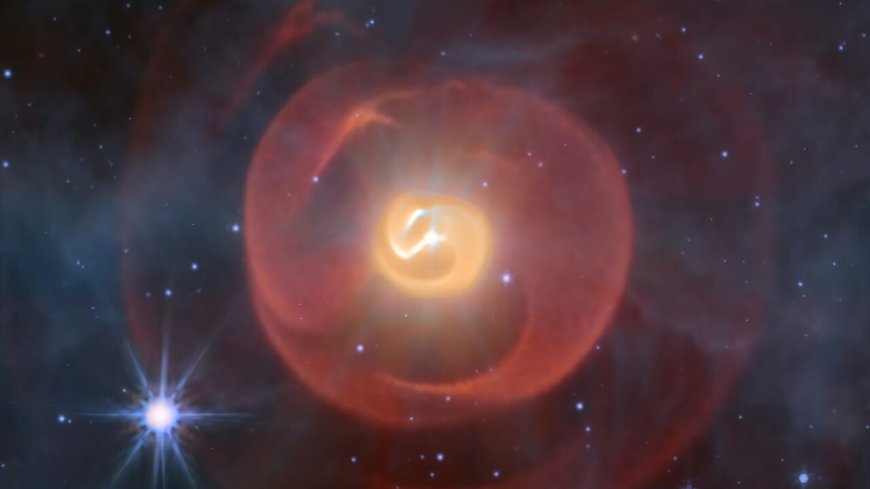James Webb Space Telescope Captures Rare Image of Two Stars in Apep Nebula
The James Webb Space Telescope has revealed a unique star system named Apep, located 8,000 light-years away in the Milky Way galaxy. This system features two dying Wolf-Rayet stars surrounded by swirling dust, with a third star interacting with their dust shrouds. The new image provides unprecedented detail and sheds light on the complex dynamics of stellar death and carbon dust formation.

The James Webb Space Telescope has captured a stunning new image of two dying stars wreathed in a spiral of dust. The highly rare star system, nicknamed Apep, is located 8,000 light-years from Earth within our Milky Way galaxy. The system contains not one but two dying stars, with a third star interacting with their dust shrouds. Nebulas like these are formed by Wolf-Rayet stars, rare dying stars that spew ionized helium, carbon, and nitrogen. These stars explode as supernovas after a few million years. By capturing infrared photons with the Very Large Telescope in Chile in 2018 and now with JWST, astronomers have revealed the system in unprecedented detail. Apep is more complex than initially thought, with two Wolf-Rayet stars and a third stable giant star interacting in a unique way. Studying Apep could provide insights into stellar death and the formation of carbon dust.
What's Your Reaction?
 Like
0
Like
0
 Dislike
0
Dislike
0
 Love
0
Love
0
 Funny
0
Funny
0
 Angry
0
Angry
0
 Sad
0
Sad
0
 Wow
0
Wow
0
























































































































































































